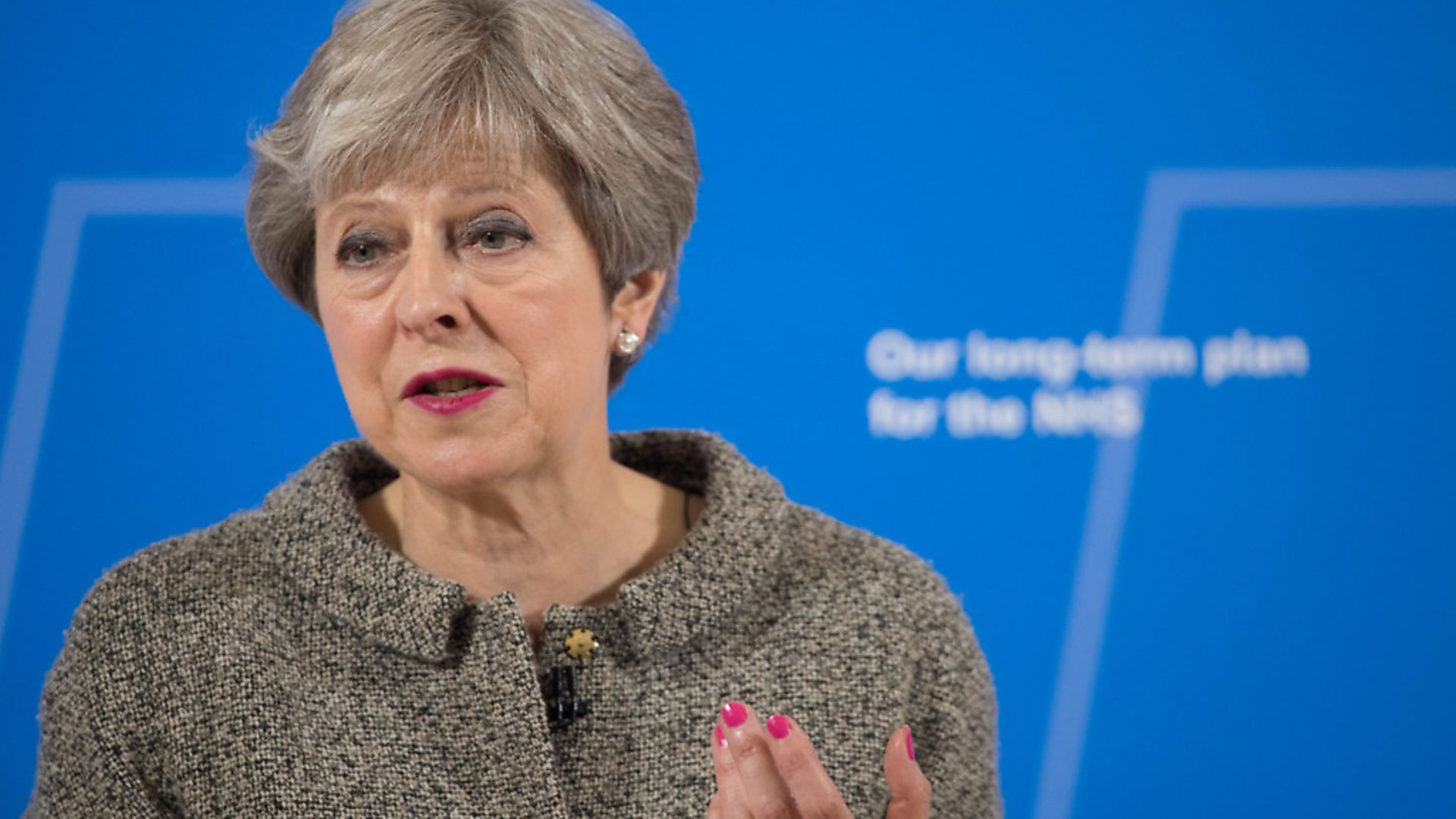
There is no Brexit dividend. There is only Brexit debt.
If our net payments to the EU are about 0.5% of GDP, we’ve already dug a bigger hole than that thanks to the referendum – losing 2% of GDP growth over the last two years. If we do actually pull the plug on our net contribution in a few years’ time, then we have to exit the single market to do so, and the economy will take another large hit.
We are digging deeper and deeper into costs, to get at a small amount of return. It is fantasy finances that deserves their own Aesop’s fable. Chasing the fool’s gold of a ‘Brexit dividend’ leaves us, like a gambler, getting continually poorer.
But wait, there’s more… The fallen pound has already pushed up NHS costs when buying equipment and supplies from overseas, or when compensating for healthcare costs of UK citizens in others countries. And how much would Brexit disruptions cost our hospitals in the event of a ‘no deal’, or reorganisation?
Theresa May has just promised a £20 billion NHS boost from a dividend that doesn’t exist. That means that we’ll pay more taxes to plug the Brexit debt, then more taxes on top of those taxes to deliver the £20 billion. Doesn’t it all make you wonder how we got here?
• Even Brexiters warned of the fallacy
The warnings about the siren calls of a Brexit dividend came early enough. In his 2014 book The Trouble With Europe, Brexiter economist Roger Bootle wrote: ‘The UK’s contribution to the EU budget is a subject of great interest in the UK media, who typically refer to the gross, rather than the net, figure. I do not wish to downplay the importance of the budget contribution: due account must be taken of it in any assessment of costs and benefits. Nevertheless, these are not the sort of sums on which the fate of great nations depends – nor on which momentous decisions about EU membership should be made.’
However, the Vote Leave campaign had different ideas. Talk of a free lunch is catchy stuff. They slapped the gross figure everywhere, insinuated it was cash waiting to be effortlessly plucked and suggested it could all be spent on the NHS – while also promising it to science, farmers, struggling regions and everyone under the sun.
Yet, as Bootle had intimated, this was all gimmickry. Larger macroeconomic consequences relegated the ‘dividend’ to small beans. Before the referendum, many bodies made long-term economic predictions for Brexit. Forget a few wild claims by George Osborne that were rightly ridiculed at the time, most independent modelling gave a range of long-term scenarios from -9.5% to ‘best case’ +1.6% GDP change by 2030. The average was negative and all models were negative in the short term, thus wiping out any dividend.
And this is what we have seen. Project Reality is bang on target. In May, Mark Carney, the governor of the Bank of England, said Brexit had knocked 2% GDP growth off the UK economy in under two years. That’s £40 billion – a sum about four times larger than the supposed Brexit dividend. So even if we’d stopped EU contributions on the day after the vote, with no extra economic disturbance whatsoever from doing so, we would still be down £20 billion. That’s why there is simply no Brexit dividend.
• Longer term is also grim
We will continue to pay our EU contribution through to 2020 anyway. That’s the agreement. Will that be the moment that the dividend is unleashed and all is fixed? No. On top of the accumulated damage, at that stage, we will still have £18 billion of our divorce bill to pay off and probably extra payments to the EU if we wish to subscribe to their programmes and agencies.
Furthermore, by the government’s own modelling, the additional net borrowing each year by 2033-34, associated with Brexit, is £17 billion per annum if we land in a Norway-style deal, £57 billion with a Canada-style deal and £81 billion if we have no deal and crash out onto World Trade Organisation rules.
That is all after any £10 billion per annum ‘Brexit dividend’ is swallowed up in the equations. And this is the year 2033-34 that we are talking about.
When these figures were released, Brexiters decried them, saying that May was planning on a ‘bespoke’ deal which would be far more favourable. So the thinktank Global Future obliged their concerns and, using the government’s modelling and wish-list, found that May’s planned bespoke deal would cost more than the Norway-style deal – with a price-tag of an extra £40 billion in net borrowing in the year 2033-2034.
There is no Brexit dividend for the NHS. Not now. Not in 20 years. There is Brexit debt, however, and that debt is hurting the NHS already.
• Overseas costs
In July 2017, the British Medical Association (BMA) published an under-reported article entitled ‘Brexit takes toll on NHS balance sheet’. It showed that NHS finances have been hit hard by the vote to leave the EU. Huge sums were wiped off NHS balance sheet by the collapse of the pound over the first year since the referendum. The loss was seen in the Department of Health’s annual accounts, where exchange-rate changes had inflated payments to EU hospitals for the treatment of UK citizens abroad.
Whereas before Brexit, the annual cost had been £658 million and the expected spend for the new year had been £580 million, the Brexit-inflated cost had been £736 million – £155 million more than expected.
However, those are just costs for treatments of Brits living and travelling abroad. There is a much larger cost to the NHS in the form of medical supplies and equipment. Shortly after the referendum, the Health Services Journal described an estimate from an NHS procurement expert that the fallen pound could cost the NHS £900 million extra in inflated costs on supplies. So taken together, that would be about a cool £1 billion per year that the fallen pound has cost our NHS already.
The pound still continues to sit at that post-vote low against the euro. This is worrying. An in-depth study of HMRC’s database, ‘UK Trade Info’, by the Association of British HealthTech Industries (ABHI) has shown that of the £5 billion worth of health technology used in the NHS in 2016, £3.2 billion came directly from elsewhere in the EU. Reliance on this source has also increased by 20% in recent years, the ABHI reports.
When you consider that one of the major burdens of the NHS budget is the growing cost of health technology and equipment, you begin to see how progressing further with Brexit will continue to jeopardise the NHS and the supply of increasingly-needed medical resources from the continent. There is no escaping it: Brexit is bad for NHS costs now and in the future.
• THE IMMIGRATION FALLACY
A fundamental fallacy often repeated is that our public services cannot handle ‘mass immigration’. Those who talk of immigration and NHS strain are only looking at one half of the equation. They are missing the fact that immigrants also boost our NHS, providing the extra taxes, staffing and economic support that makes our the health stronger.
So do EU immigrants add more to the NHS’s demand side or supply side? They are very light on the demand side, making up only about 5% of the UK population. They usually come here young and healthy.
Often they pay taxes for a few years then go elsewhere. And if they fall ill, they frequently use the health system in their country of birth. They provide nothing like the strain that our native ageing population does.
Now let’s look at the supply side. EU immigrants make up about 7% of our nursing and home-visit workforce and 10% of our doctors. They also have a higher contribution-to-cost ratio than do UK natives. In other words, the relationship our fellow EU citizens with the NHS is supply-side heavy.
So it’s not the case that immigrants strain our NHS. The problem we have is the strain on the NHS of immigrants leaving the service.








